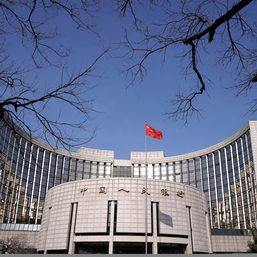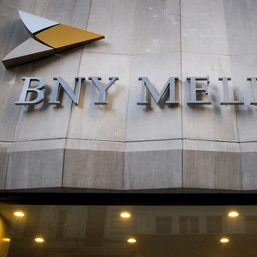SUMMARY
This is AI generated summarization, which may have errors. For context, always refer to the full article.
![[ANALYSIS] Mind the stock, not the economy](https://www.rappler.com/tachyon/2023/03/TL-Focus-stock-market-not-economy-March-23-2023.jpg)
This is what seasoned investors tell us: mind the stock and not the economy. And while at it, focus on your trading system because taking a position in the market is as good as anytime.
Take for example our latest trading results. The market last week ended deeper into negative territory. It closed at 6,469.72 of the PSEi, down 120.16 points (or -1.82 %), largely spurred by similar banking sell-offs that sent the Dow Industrial Average (DIJA or Dow for short) to close with a massive 400-point loss last Friday, March 17, this time from liquidity issues in Credit Suisse Group AG.
Credit Suisse has been facing client exodus since 2022 after it was found to be suffering from what it disclosed as “material weaknesses in internal control,” which it admitted to have existed even in 2021. These material weaknesses include “string of losses and spate of scandals, including money laundering charges.”
Reports say Credit Suisse lost US$5.5 billion in the collapse of two of its investment management arms in 2021. In 2022, it declared another massive loss of US$7.6 billion.
As one of the 30 biggest banks in the world with overreaching business worldwide, it goes without saying that the ripple of its fall would be without damaging repercussions.
This came to a head, when it suffered a rapid sell-off of its shares on Wednesday, March 15 (US date), to a session’s trading low of by as much as 30% when Saudi National Bank (SNB), its largest stockholder, decided against adding more stake in the bank that will pump in more cash amid client withdrawals, under the pretext that if its holdings “crosses 10 percent, it will be subject to more regulatory restrictions,” which it did not want.
Aside from the fundamental headwinds described above, changes in the composition of the Financial Times Stock Exchange Philippines Index (FTWIPHLL) added to the market’s weak technical bearings. Like the MSCI Philippines Index that I have explained before, the FTWIPHLL measures the performance of the Philippine equity market. It is derived from the FTSE Global Equity Series (GEIS), “which covers 99 percent of the world’s investable market capitalization.”
Moved from large to mid-caps are Monde Nissin Corporation (MONDE) and San Miguel Corporation (SMC), while Nickle Asia Corporation (NIKL) and Filinvest Land, Inc. are moved to small caps.
SSI Group, Inc. (SSI), The Keepers Holdings, Inc. (KEEPR), Basic Energy Corporation (BSC), DDMP REIT, Inc. (DDMPR), Ginebra San Miguel, Inc. (GSMI), Integrated Micro-Electronics, Inc. (IMI), Petron Corporation (PCOR), PhilWeb Corporation (WEB), Pilipinas Shell Petroleum Corporation (SHLPH) and Shakey’s Asia Ventures, Inc. (PIZZA) are moved as micro caps. Moreover, Ayala Corporation (AC) and Ayala Land, Inc. (ALI) are removed from the FTSE Asean 40 Index.
A large-cap is generally categorized to have a market value between US$10 billion to US$200 billion; a mid-cap ranges from US$2 billion to US$10 billion; a small-cap is from US$ 250 million; and a micro-cap has a market value of US$50 million to US$250 million.
Cue from the US
Amid a mix of good and bad news for the day, the market continued with its weakness on Monday, March 20. The PSEi dropped, albeit slightly, by another 18.70 points (or -0.28 %) on relatively low volume of 714 million shares and total value turnover of P5.63 billion.
Of note, foreign investors were net buyers for the day but they did not turn the market to their direction. This is most likely because their buying transaction was barely above their selling turnover and market breadth was much less than its daily average. Nevertheless, the optimism of foreign investors this morning became clearer when Wall Street opened for week (Monday night, our time).
Wall Street was lifted by the optimism on developments in Credit Suisse. UBS bought Credit Suisse, on Sunday, for US$3.23 billion “in an all-share deal brokered by the Swiss government to end the crises and restore confidence in the banking system.” The deal included “a CHF100 million liquidity assistance to UBS by the Swiss National Bank and a CHF9.0 billion guarantee from the government for potential losses from assets UBS is taking over.”
Bolstering this development was the agreement made by the US Federal Reserve and five other central banks to enhance liquidity through the use of a USD-Swap line. (A USD-Swap line is an agreement between central banks to obtain needed fundings to be distributed to the commercial banks in their country to improve liquidity conditions in times of market stress.) These five other central banks included the Bank of Canada, Bank of England, Bank of Japan, European Central bank, and the Swiss National Bank. The arrangements, as described, will “increase the frequency of 7-day maturity operations from weekly to daily,” that will ease strains in funding markets.
On Tuesday, March 21, the PSEi climbed higher at 6,4530.75, up 79.73 points or +1.23%. All counters were up, but total volume and total value turnover were again low with 546 million shares and P4.78 billion, respectively. Likewise, foreign investors were net sellers but without any impact on the market’s overall direction because their selling turnover slightly tipped over their buying transactions and total market value turnover was lower than daily average, again.
Wall street also ended on a positive note on Tuesday (night, our time), helping lift the market to extend its rally on Wednesday morning with a net gain of 15.52 points or +0.23% on a low volume of 413.6 million shares and total value turnover of P4.23 billion only. Latest analysts’ estimates also place the market’s support and resistance bands at 6,500 or so and 6,600 to 6,650, respectively.
Looking closely, even if the market is on the uptick since Monday, it has been on an increasingly diminishing total value turnover. Come to think of it, news about the new interest rates to be imposed are due this weekend as well as the latest report on the status of the economy with its still-elevated rate of inflation.
The GIM trading system
This brings us back to what we should be doing: To “mind the stock, not the economy, and focus on your trading system.”
My preferred model, as I have mentioned last time, is the GIM or General Investment Method of Jake Bernstein, based on his book, “No Bull Investing,” which is essentially composed of what he calls “The Set Up,” “Trigger,” and “Follow-Through” or STF.
According to Bernstein, a “setup is any investment opportunity based on a recommendation, research, a tip, an analysis, a newspaper article, news, rumor, historical patterns, chart analyses (trends and trend lines), computer trading system signals (like the RSI, MACD and other momentum indicators, and Oscillators). The “trigger is any indication or confirmation that validates the setup as a realistic possibility.” Again, the trigger “can be news, additional research, computer signals and chart patterns.” The “follow-through” is the “action by the investor.”
Actually, the GIM is divided into five parts, namely: 1) historical pattern; 2) expectation; 3.) confirmation; 4) action; and 5) management.
No.1 is simply the “setup,” as explained above. No. 2 is the payback you expect to have when you take a position on it. No. 3 is but the “trigger,” as also explained above. Nos. 4 and 5 are the “follow-through,” which include managing the risk of your market exposure, as when to sell or must fold. Read the book. It will be your tool to “winning the trade even before starting it.” – Rappler.com
The article has been prepared for general circulation for the reading public and must not be construed as an offer, or solicitation of an offer to buy or sell any securities or financial instruments whether referred to herein or otherwise. Moreover, the public should be aware that the writer or any investing parties mentioned in the column may have a conflict of interest that could affect the objectivity of their reported or mentioned investment activity. You may reach the author at densomera@yahoo.com.
Add a comment
How does this make you feel?
![[ANALYSIS] Winning the trade by doing your homework](https://www.rappler.com/tachyon/2023/03/TL-learning-trade-doing-homework-March-2-2023.jpg?fit=449%2C449)





![[ANALYSIS] Time to take the contrarian side](https://www.rappler.com/tachyon/2024/07/thought-leaders-time-to-take-the-contrarian-side-072520224.jpg?resize=257%2C257&crop=452px%2C0px%2C1080px%2C1080px)
![[ANALYSIS] Every inch of the market’s climb is a battle now but may soon prove better](https://www.rappler.com/tachyon/2024/07/thought-leaders-market-climb-battle.jpg?resize=257%2C257&crop=324px%2C0px%2C720px%2C720px)
![[ANALYSIS] The West Philippine Sea dispute and the stock market’s performance](https://www.rappler.com/tachyon/2024/06/thought-leaders-west-ph-sea-dispute-and-market-performance.jpg?resize=257%2C257&crop=134px%2C0px%2C720px%2C720px)


There are no comments yet. Add your comment to start the conversation.